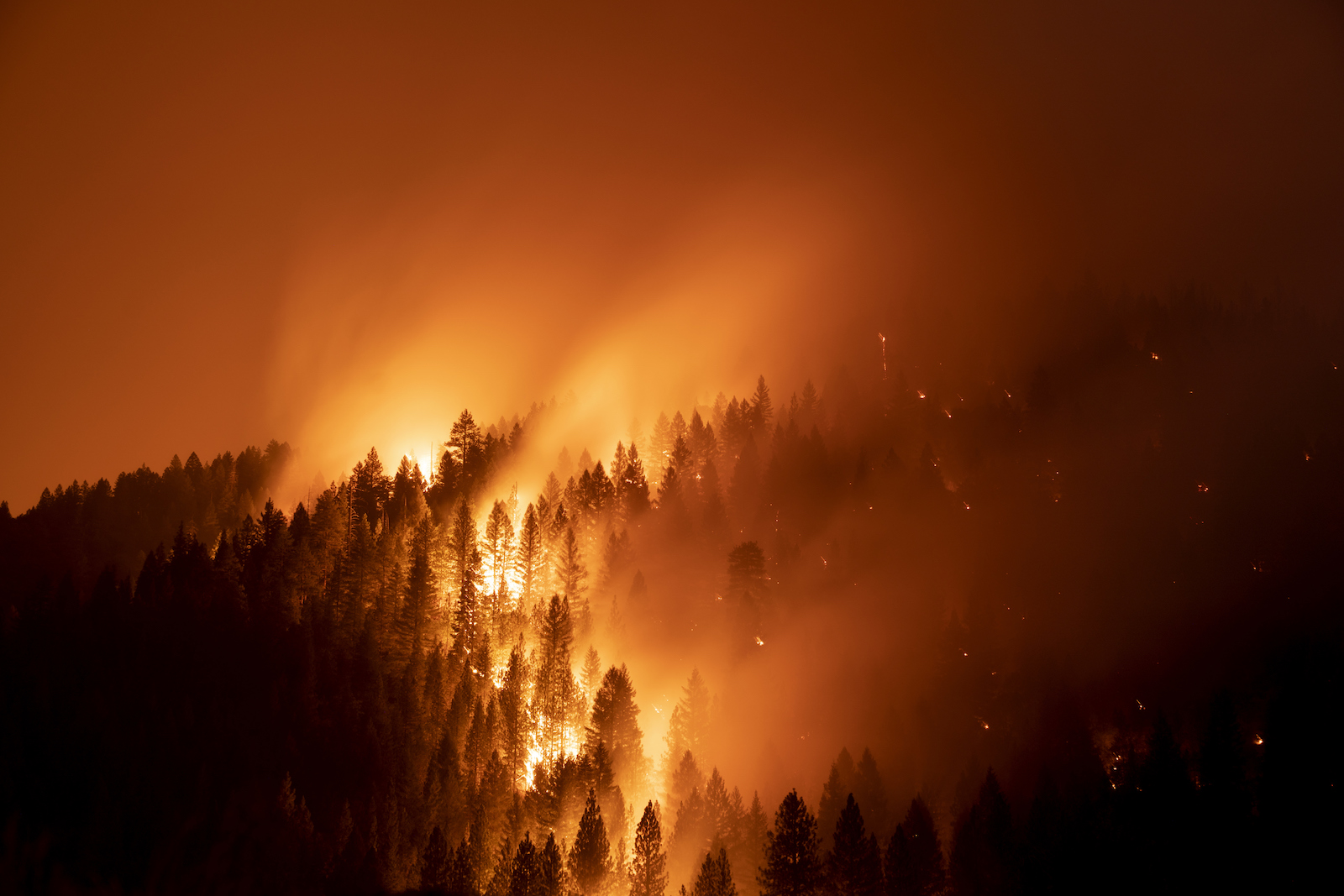In recent years, the Western United States has become synonymous with record-breaking wildfires. But fire-driven deforestation is actually a serious problem worldwide. According to a new analysis from Global Forest Watch, forest fires are burning nearly twice as much tree cover as they did 20 years ago — a trend researchers attribute to extreme heat and drier landscapes as a result of climate change.
Researchers analyzed nearly two decades of fire-driven tree loss data from the University of Maryland. Data shows between 2001 and 2019, Russia and Canada experienced the biggest losses in forest canopy due to fires. The United States ranked third globally, with over a quarter of its forest loss attributed to fires alone.
Forest fires are not going away any time soon, said James MacCarthy, a research analyst for World Resources Institute, which hosts the Global Forest Watch tool. Forest fires create what researchers call a “fire-climate feedback loop.” When a tree burns down, it releases previously stored carbon into the atmosphere. The more carbon in the atmosphere, the worse the effects of climate change, which only makes forested areas more susceptible to fire.
The increasing likelihood of fires, as outlined by new data, calls into question the usefulness of using forests to offset carbon emissions — a popular climate strategy in several states. But when fires destroy these forests, many of which are located in the West where the risk of fires is increasing, extra carbon is released. But despite increasing fires, MacCarthy says forests should remain a key part of strategies to combat climate change.
“Nature has to be part of the solution,” MacCarthy said, which includes planting more trees and protecting existing ones.
While fires have exacted a heavy toll on global forests, there are some reasons for optimism. Forests in regions historically susceptible to fire have adapted to low-intensity fires over centuries, MacCarthy said. Mature trees tend to survive wildfires, depending on the fire’s severity.
In order to reduce the local risk of high-intensity forest fires, people could remove smaller trees and twigs beneath the forest canopy through controlled burns, said Jessica Richter, a GIS research analyst with Global Forest Watch. North American Indigenous peoples have long used controlled burns for forest management, a strategy that some U.S. states are starting to adopt more broadly after decades of no-burn policies.
Globally, Richter said ending deforestation and reducing reliance on fossil fuels are also necessary to mitigate the fiery effects of climate change. Continued research on forest loss due to fires will also help: The data released this week used satellite imagery to determine where forest loss has been driven by fires alone, at a greater level of specificity and longer period of time than previous studies.
Moving forward, researchers will update the analysis annually, which will allow for a better understanding of trends in forest loss due to fires over time at the global, regional and local level.
“Not all fires are bad,” MacCarthy said. “Too much and too frequent is when it starts to become a problem.”



